La Observación. Fuente de Ideas para Escribir II [ESP-ING]
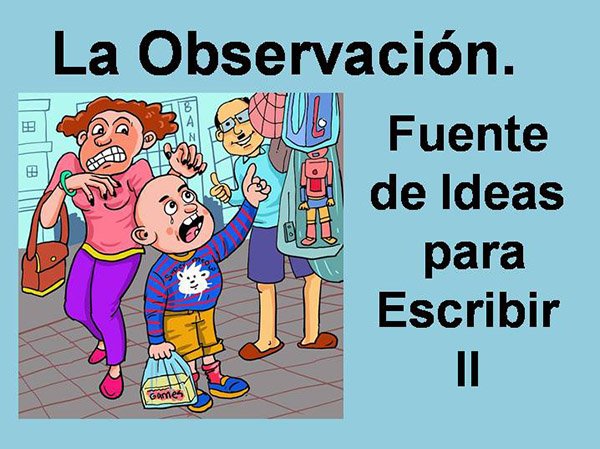
La semana pasada escribí la primera parte de este artículo con la finalidad de dar respuesta a la propuesta de la apreciada comunidad @motherhood que en el mes de junio nos invitaba a dar “ideas para las publicaciones de mamás/papás en Hive”. La verdad es que tuve un “desliz mental” y publique el post en otra comunidad, acá te dejo el enlace si deseas echarle un vistazo.
En ese primer post la propuesta es observar a nuestros hijos en un área y lapso de tiempo determinado, ir tomando nota de las observaciones para luego hacer nuestro escrito basado en ellas. Propongo una serie de preguntas que pueden generar otras, los temas pueden ser múltiples y la idea general es que seamos observadores atentos de la evolución de nuestros niños en sus distintos procesos.
Hoy la propuesta es observarnos a nosotros mismos en la relación con nuestros hijos. A continuación les narro un ejemplo que ayuda a visualizar la importancia de esta autoevaluación.
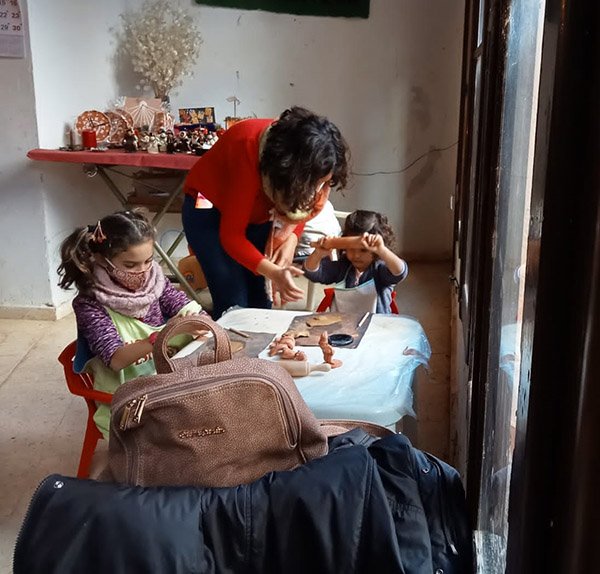
Es un día especial, Valentina ha recibido el informe escolar de Andrea. Se sienten felices, la maestra no ha dejado de alabar a Andrea y ha dicho que la niña va muy bien preparada para su primer grado. Todo es celebración, para que ese momento quede como un bello recuerdo entre ellas, Valentina quiere regalarle algo especial a su niña.
Hace unas semanas atrás cuando fueron a comprar un material para hacer una actividad escolar, Andrea, vio unas plastilinas que le gustaron mucho, este era un buen momento para dárselas, además era un excelente regalo que ayudaría a la niña a distraerse en el largo periodo vacacional. Valentina, al constatar que le quedaba tiempo suficiente antes de tener que volver al trabajo, decide ir al sitio a comprar las plastilinas, Andrea, se pone muy contenta e ilusionada se encaminan hacia la tienda.
Ya en el negocio Valentina pide el producto y le sacan las tres presentaciones, cuyas diferencias radican en las cantidades y por supuesto en los precios. Escoge el mediano que se ajusta a su presupuesto. La niña al darse cuenta, le dice que quiere es el grande, Valentina trata de explicarle el porqué no puede adquirir el grande, Andrea no logra comprenderlo, entre llantos y gritos de la madre e hija, la magia del buen momento desaparece. Valentina, para poner fin al asunto, termina comprando el paquete que quiere Andrea.
Salen de la tienda, molestas. Valentina se siente algo decepcionada, triste y un poco avergonzada por la “cómica” que armaron en la tienda, no desea hablar con la niña y no deja de pensar en lo irónico del informe de la maestra que dice: Andrea tiene una actitud positiva hacia los límites, es tolerante, mostrando aceptación y respeto a las pautas dadas.
Esto le hace ruido, y se pregunta: ¿Por qué la niña en la escuela, con su maestra acepta las reglas y con ella no? Bueno, con su papá y la abuela tampoco responde mal. Piensa: — Es conmigo que se porta así, es a mí a quien no respeta, es como si supiera que conmigo puede jugar la pelota, como me dice mi mamá a cada rato:—Mapurite sabe a quién pea—
Pero, ¿Por qué la agarra conmigo si yo lo que trato siempre es de complacerla?, ¿Qué es lo que hace que ella conmigo se comporte así?; ¿Qué es lo que no estoy haciendo bien? Finalmente ha dado con la pregunta clave, preguntarse así misma cómo lo está haciendo, ha abierto la puerta para entrar a un proceso de auto-observación y es desde allí que puede comenzar a hacer algo para mejorar la conducta de su hija, la de ella y la relación entre ambas.
La auto-observación es un proceso en el que no siempre es fácil caer en cuenta, la “tendencia natural”, es buscar afuera, en el otro, las respuestas a diversas situaciones y comportamientos.
El observarnos a nosotros mismos en la relación con nuestros hijos puede convertirse en una fuente importante para mantener o mejorar esta relación además que nos proporcionar una gran variedad de temas para escribir sobre la dinámica que se establece. Veamos cómo podemos hacerlo.
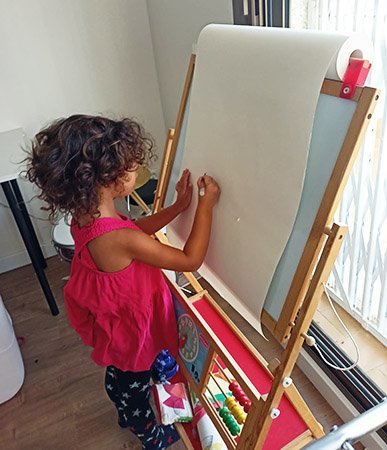
1.- Observa atentamente una situación. Puede ser positiva o negativa, ambas pueden ser un gran aporte. En el caso del ejemplo, la madre se da cuenta que la niña tiene un comportamiento distinto con ella:
a.- describe, con detalles como se comparta con los demás y como se comporta contigo en algunas situaciones concretas.
b.- Ahora, obsérvate y describe cuáles son tus respuestas en ese momento: gritas, te pones de tú a tú con la niña de cinco años, no le hablas, le das lo que quiere, cuando echas el cuento sientes un poco de orgullo porque tu hija tiene “carácter”.
C.- Analiza cómo te hace sentir la situación:
a.- Te preocupa el pensar que la niña siga creciendo con ese comportamiento y que la relación entre ambas se vuelva más difícil.
b.- Piensas que ya pasará que son asuntos de la edad y en algún momento va actuar de manera distinta sin que tú hagas algo.
c.- Te sientes derrotada, frustrada, impotente no sabes que hacer para remediar una situación en la que te das cuenta que tienes gran responsabilidad.
Si te anotas en el punto b, no hay mucho que investigar, ni observar a menos que sea una observación a largo plazo y nos cuentes que ha pasado con Andrea dentro de cinco años.
Ahora si te ubicas en el punto a o c, tienes por delante varias actividades a realizar, por ejemplo:
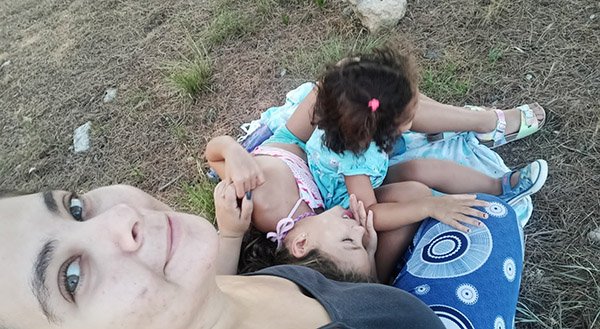
2.- Buscar estrategias. Busca y encuentra dos estrategias que puedan ayudar a modificar la conducta de tu niña, por ejemplo: darle un tiempo fuera hasta que se calme (en internet puedes conseguir como aplicarlo de manera efectiva), negarle lo que desea por un periodo corto de días, suspenderle una actividad que le guste por ese día. Ten presente que cada acción pierde su efecto si se prolonga en el tiempo. Son acciones concretas, para una acción concreta y en un tiempo claramente delimitado.
3.- Compromiso contigo misma No vas a acceder ante las exigencia de la niña pero para ello es importantísimo que la niña sepa lo que van a hacer. Cuando ambas estén calmadas después de un evento, habla con ella, de buenas maneras y fija las nuevas reglas, con cariño y respeto, hazle ver que no hay más rabietas, ni escándalos. Se puede molestar, lo puede expresar y se buscaran alternativas. Puedes estar segura que si se lo explicas bien ella te va a entender.
4.- Afianzando avances Haz con tu niña un cartel de logro, para las dos, y en cada oportunidad que ella logre manejar sus emociones y comportamiento, al igual que tú, en una situación “que pudo ser conflictiva” ambas se lo reconocen como un logro de equipo.
Esta última estrategia es conveniente utilizarla para afianzar las conductas positivas de nuestros hijos escolares.
Aquí todo es importante por lo que el registro de nuestras observaciones y auto-observaciones es fundamental, con ellas podemos saber que nos está funcionando o si es necesario buscar otras estrategias más suaves o más fuertes. Lo relevante es que la relación entre ambos mejore y poder dar constancia de lo que hacemos con intención de lograr cambios positivos y los resultados que obtenemos.
No olvides compartir con nosotros esas vivencias, estrategias y resultados algún papá o mamá puede encontrar en ello información valiosa que lo ayude a ser cada día mejor padre o madre.

In English
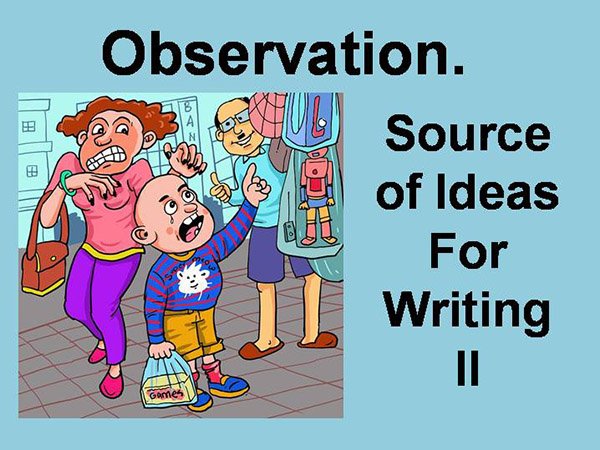
Last week I wrote the first part of this article with the purpose of responding to the proposal of the appreciated community @motherhood that in the month of June invited us to give "ideas for moms/dads publications in Hive". The truth is that I had a "mental slip" and published the post in another community, here I leave the link if you want to take a look at it.
In that first post the proposal is to observe our children in a given area and time span, take note of the observations and then do our writing based on them. I propose a series of questions that can generate others, the topics can be multiple and the general idea is that we are attentive observers of the evolution of our children in their different processes.
Today the proposal is to observe ourselves in our relationship with our children. Here is an example that helps to visualize the importance of this self-evaluation.

Is a special day, Valentina has received Andrea's report card. They are happy, the teacher has not stopped praising Andrea and has said that the girl is very well prepared for her first grade. Everything is a celebration, so that this moment remains a beautiful memory between them, Valentina wants to give her little girl something special.
A few weeks ago when they went to buy some material to do a school activity, Andrea saw some play dough that she liked very much, this was a good moment to give it to her, besides it was an excellent gift that would help the girl to distract herself during the long vacation period. Valentina, realizing that she had enough time left before she had to go back to work, decided to go to the store to buy the play dough, Andrea was very happy and excited and they went to the store.
Once in the store Valentina asks for the product and they bring out the three presentations, whose differences lie in the quantities and of course in the prices. She chooses the medium size that fits her budget. Valentina tries to explain to her why she can't buy the big one, but Andrea can't understand, and between the cries and screams of mother and daughter, the magic of the good moment disappears. Valentina, to put an end to the matter, ends up buying the package that Andrea wants.
They leave the store, upset. Valentina feels a little disappointed, sad and a little embarrassed by the "comical" scene they had in the store, she does not want to talk to the girl and keeps thinking about the irony of the teacher's report that says: Andrea has a positive attitude towards limits, she is tolerant, showing acceptance and respect for the given guidelines.
This makes her wonder: Why does the child at school, with her teacher, accept the rules and not with her? Well, with her dad and grandmother she doesn't respond badly either. She thinks: - It's me she behaves like that, it's me she doesn't respect, it's as if she knows she can play ball with me, as my mom tells me all the time: -Mapurite knows who she's hitting-.
But, why does she grab her with me if what I always try to do is to please her, what is it that makes her behave this way with me, what am I not doing right? She has finally found the key question, asking herself how she is doing, has opened the door to enter into a process of self-observation and it is from there that she can begin to do something to improve her daughter's behavior, hers and their relationship.
Self-observation is a process that is not always easy to realize, the "natural tendency" is to look outside, in the other, for answers to various situations and behaviors.
Observing ourselves in our relationship with our children can become an important source for maintaining or improving this relationship, as well as providing us with a wide variety of topics to write about the dynamics that are established. Let's see how we can do it.

1.- Observe a situation carefully. It can be positive or negative, both can be a great contribution. In the case of the example, the mother notices that the child is behaving differently towards her:
A.- describe, in detail how she shares herself with others and how she behaves with you in some specific situations.
B.- Now, observe yourself and describe what your responses are at that moment: you yell, you get on one-on-one with the five year old, you don't talk to her, you give her what she wants, when you tell the story you feel a little proud because your daughter has "character".
C.- Analyze how the situation makes you feel:
a.- You are worried that the child will continue to grow up with this behavior and that the relationship between the two of you will become more difficult.
b.- You think that it will pass, that it's an age thing and at some point she will act differently without you doing anything about it.
c.- You feel defeated, frustrated, impotent, you do not know what to do to remedy a situation in which you realize that you have great responsibility.
If you are in point b, there is not much to investigate or observe unless it is a long-term observation and you tell us what has happened with Andrea in five years.
Now if you place yourself in point a or c, you have several activities to carry out, for example:

2.- Search for strategies. Look for and find two strategies that can help modify your child's behavior, for example: give her a time-out until she calms down (on the internet you can get how to apply it effectively), deny her what she wants for a short period of days, suspend an activity she likes for that day. Keep in mind that each action loses its effect if it is prolonged in time. They are concrete actions, for a concrete action and in a clearly delimited time.
3.- Commitment to yourself. You will not give in to the child's demands, but it is very important that the child knows what you are going to do. When both are calm after an event, talk to her, in good manners and set the new rules, with affection and respect, make her see that there are no more tantrums or scandals. She can be upset, she can express it and alternatives will be sought. You can be sure that if you explain it well she will understand you.
4.- Reinforcing progress. Make with your child a poster of achievement, for both of you, and every time she manages to handle her emotions and behavior, as well as you, in a situation "that could have been conflictive" both of you will recognize it as a team achievement.
This last strategy is convenient to use to reinforce the positive behaviors of our school children.
Here everything is important, so the record of our observations and self-observations is fundamental, with them we can know what is working for us or if it is necessary to look for other softer or stronger strategies. The important thing is that the relationship between the two improves and that we can give evidence of what we do with the intention of achieving positive changes and the results we get.
Don't forget to share with us these experiences, strategies and results, some parents may find valuable information that will help them to be a better parent every day.

Translated with www.DeepL.com/Translator (free version)
Fuente de imágenes: Archivo personal. Portada



MIS REDES SOCIALES



Cortesía de la comunidad

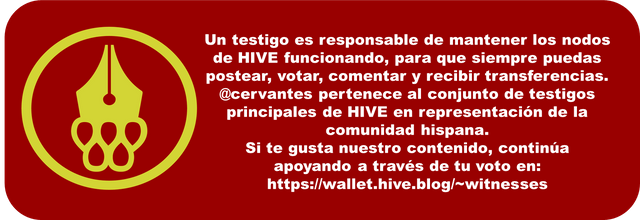
Te invito a apoyar este proyecto como witnes y a formar parte de esta gran comunidad uniéndote a su Discord en el siguiente enlace:
Discord de la comunidad Cervantes




https://twitter.com/damaryspacheco5/status/1544040704741359616
The rewards earned on this comment will go directly to the people sharing the post on Twitter as long as they are registered with @poshtoken. Sign up at https://hiveposh.com.
Hola amiga @damarysvibra 👋
Que tema tan interesante, la autoevaluación es muy importante en cualquier ámbito de la vida. Y cómo madres debemos autoevaluarnos en todo momento para corregir posibles errores.
Agradezco los tips que nos ofreces en tu publicación y el ejemplo es muy acordé para el tema.
Un gusto leerte, saludos 🤗
Hola @eumelysm gracias por pasar y comentar, espero que te sea útil 😙
Me vi muy reflejado en el ejemplo de Valentina y la compra de la plastilina, me ha pasado y no es nada agradable cuando todo el mundo te queda viendo como si fueras el peor padre del mundo solo porque tus hijos no comprenden ciertas situaciones, por lo tanto no deja de ser un momento incómodo, en medio de esas situaciones lo que más hago es ir preparando el terreno ir hablando con mi hija sobre el asunto para que cuando estemos en el sitio no me haga pasar incomodidades. Es algo que he estado poniendo en práctica y me ha resultado, el poder hablarles y explicarles las cosas hacen que puedan entender un poco.
Hola @jhoanbolivar19 la verdad es que se pueden crear situaciones muy incomodas, creo que lo más importante es darnos cuenta que podemos actuar para que la situación no pase a mayores.
Las personas en general perdemos la atención muy rápido y los niños más rápido aún por lo que los "discursos" se pierden, una de las recomendaciones que en este sentido he leído es que nos enfoquemos en el punto y que en pocas palabras le expliquemos al niño el por qué no se le puede comprar todo lo que ve y le gusta, de la manera más sencilla posible, que seguro con constancia las va comprendiendo cada vez más.
Saludos y éxitos en tus prácticas. 😊